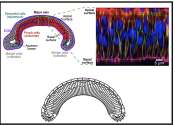Bactrocera
Ceratitis
Paracantha
Rhagoletis
Tephritis
Urophora
Euaresta
Xyphosia
hundreds more
Tephritidae is one of two fly families referred to as "fruit flies". Tephritidae does not include the biological model organisms of the genus Drosophila, which is often called the "common fruit fly". Drosophila is, instead, the type genus of the second "fruit fly" family, Drosophilidae. There are nearly 5,000 described species of tephritid fruit fly, categorized in almost 500 genera. Description, recategorization, and genetic analysis are constantly changing the taxonomy of this family. To distinguish them from the Drosophilidae, the Tephritidae are sometimes called peacock flies.
Tephritid fruit flies are of major importance in agriculture. Some have negative effects, some positive. Various species of fruit fly cause damage to fruit and other plant crops. The genus Bactrocera is of worldwide notoriety for its destructive impact on agriculture. The olive fruit fly (B. oleae), for example, feeds on only one plant: the wild or commercially cultivated olive. It has the capacity to ruin 100% of an olive crop by damaging the fruit. On the other hand, some fruit flies are used as agents of biological control, thereby reducing the populations of pest species. Several species of the fruit fly genus Urophora are questionable in their effectiveness as control agents against rangeland-destroying noxious weeds such as starthistles and knapweeds.
Most fruit flies lay their eggs in plant tissues, where the larvae find their first food upon emerging. The adults usually have a very short lifespan. Some live for less than a week.
Fruit flies use an open circulatory system as their cardiovascular system.
Their behavioral ecology is of great interest to biologists. Some fruit flies have extensive mating rituals or territorial displays. Many are brightly colored and visually showy. Some fruit flies show Batesian mimicry, bearing the colors and markings of dangerous insects such as wasps because it helps the fruit flies to avoid predators; the flies, of course, lack stingers.


